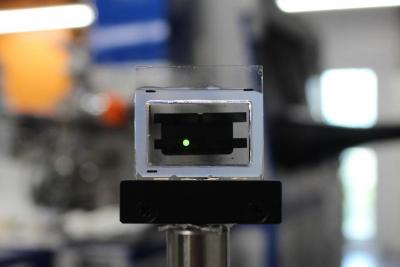Researchers from Japan's Kyushu University developed new OLED devices made by integrating OLED emitters with thick layers of hybrid perovskite materials. The researchers say that such a device structure to enable lower-cost production and better viewing angles in OLED displays.

OLED devices usually use a very thin layer of organic materials, as these are poor conductors, which makes production more difficult and also leads to cavity effects which distorts the emission color. The thick perovskite-OLED hybrid layer (which is around 2,000 nm thick) are more easily processed compared to thin film layers while still being highly conductive.
This could be a breakthrough in OLED device structure, as this is the first time that an OLED device is realized that is not made from a thin film of emitting material.
Perovskites are being used to develop emitting LED devices, but these still suffer from low lifetime. In this research, the perovksites were simply used for transmitting electricity - which did not effect the liftime of the OLED materials. Perovskites are also seen as a promising materials for quantum dots for the display industry. To learn more about perovskite materials, check out our Perovskite Handbook.

